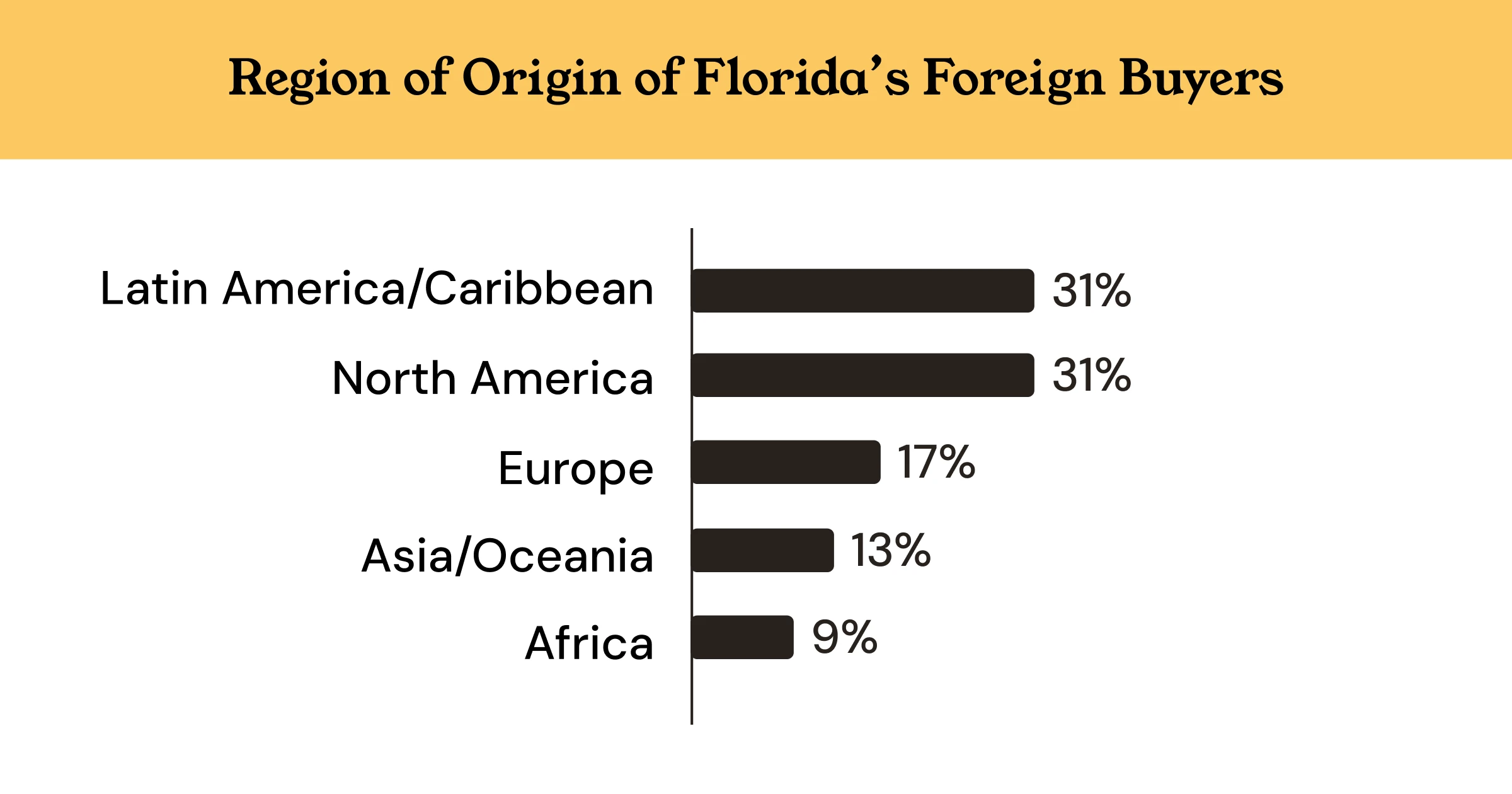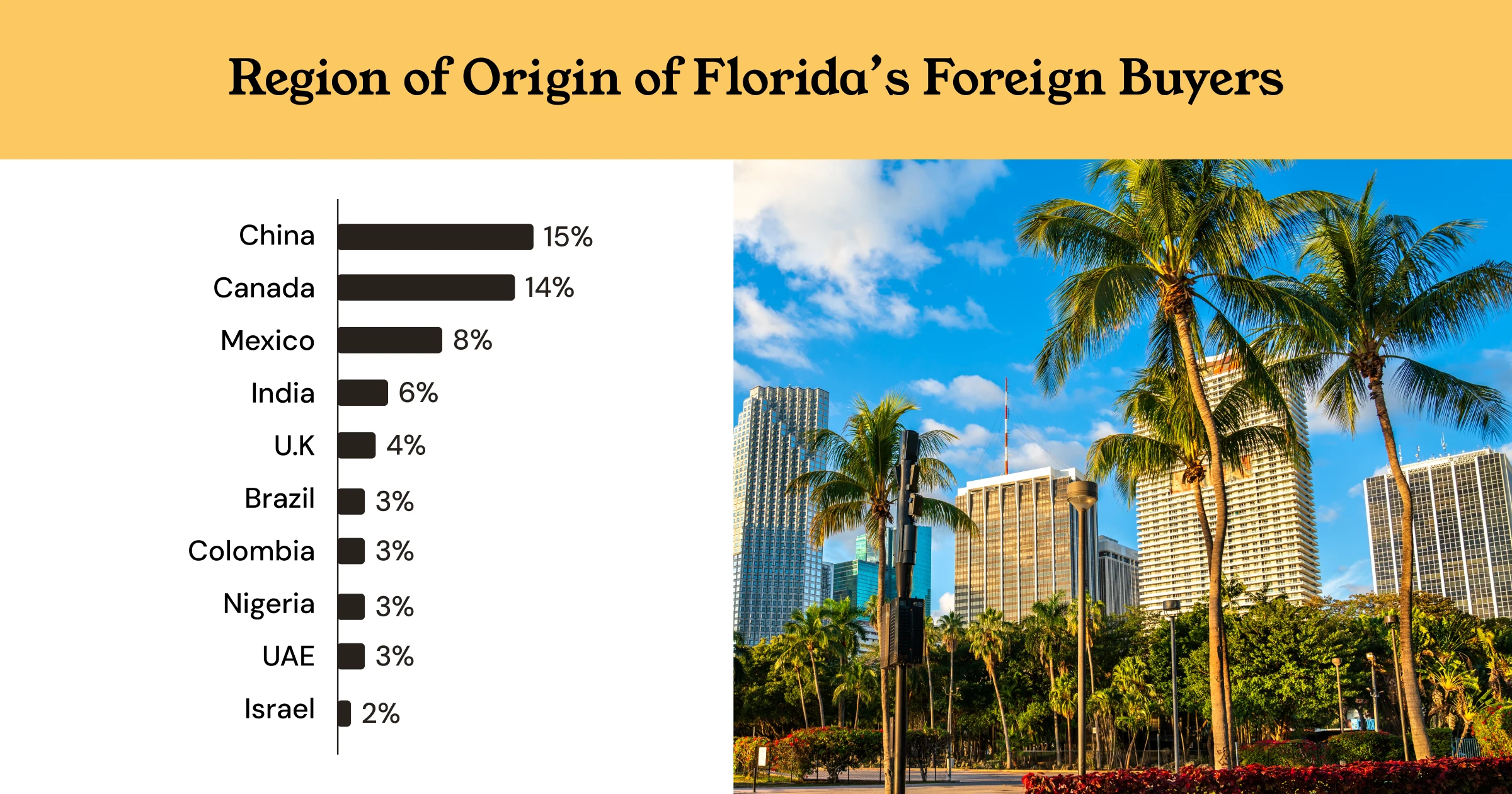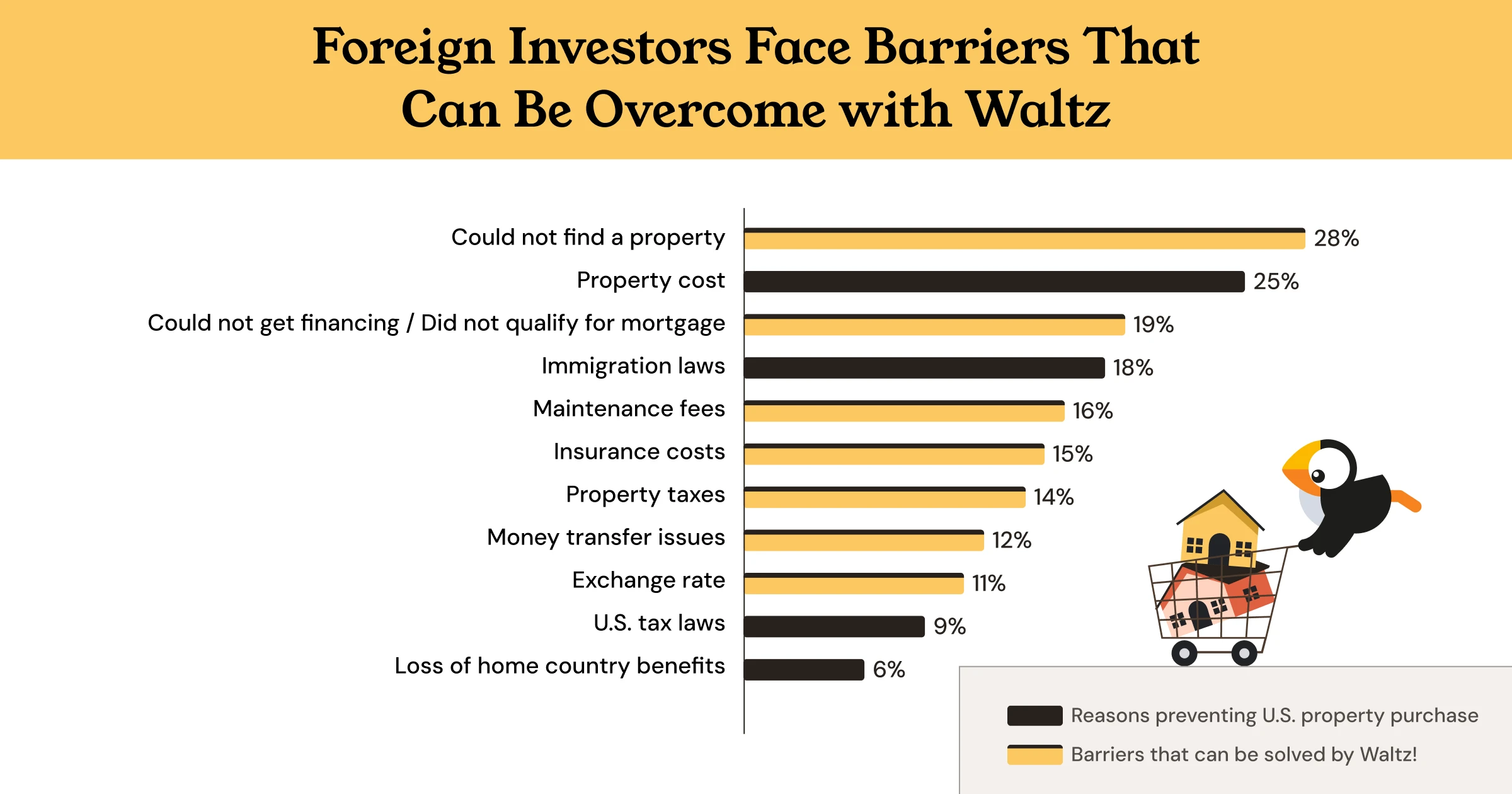🎉 Waltz reaches $50M💰 in funding to support LATAM growth 🎉 Read the full story here
Contrary to recent headlines about foreigners pulling out, global interest in U.S. real estate is actually heating up.
Each year, the National Association of Realtors surveys agents across the country to track international activity in the housing market. The 2025 report confirms what Waltz is seeing based on our loan application volume: demand from foreign buyers is on the rise. There was a 33.2% increase in the dollar volume of foreign buyer purchases compared to last year, signaling strong momentum in cross-border investment.
Why?
The U.S. continues to stand out as a reliable and attractive destination for international capital, thanks to its economic stability and investor-friendly policies. Among the various trends in the NAR report, there are five that stand out. Let’s unpack these trends together!
The proof is in the numbers. International buyers are playing a larger role in U.S. real estate than they did a year ago, gaining momentum as a powerful and growing segment of the market. Here’s a snapshot of what the 2025 NAR report reveals:

Demographic trends play a vital role in shaping the dynamics of the U.S. real estate market, especially when it comes to foreign investment. Different countries and regions bring unique buying behaviors, preferences, and financial capabilities that influence where and what types of properties are in demand. Top foreign buyers include:
Another emerging trend is the rise of buyers from Nigeria, the U.A.E., and Israel, who have recently entered the top 10 countries investing in U.S. real estate. This shift reflects growing economic ties, increasing global mobility, and a desire among investors from these regions to diversify their portfolios internationally.
Latin American (LATAM) investors continue to be a powerful force in the U.S. real estate market, holding the position as the second-largest group of foreign buyers with a 28% share. Countries like Mexico (8%), Brazil (3%), and Colombia (3%) rank among the top 10 foreign buyer nations. Their preferred destinations reflect both economic opportunity and cultural connections. LATAM buyers' favorite destinations of purchase are Texas (44% of buyers), Florida (31%), New York (26%), Arizona (26%), and California (18%).
Latin Americans favor U.S. real estate because it offers a stable, reliable way to protect and grow wealth amid economic uncertainty at home. With currencies in countries like Argentina often losing value due to inflation, investing in U.S. property backed by the strong U.S. dollar provides security and a hedge against market volatility. Decades of steady appreciation and income potential through rent make U.S. real estate an attractive investment vehicle. Strong cultural ties and familiar communities in key markets like Texas and Florida further build trust and confidence, making these locations natural choices for Latin American buyers.
Read more: The Case for Latin America Doubling Down on U.S. Real Estate in 2025

Florida remains the top destination for foreign investment.
There’s been talk that Florida overbuilt and that many areas are seeing that supply doesn’t reflect demand. That’s not proving to be true among foreigners with Florida representing 21% of all purchases made by internationals. Canadians and the LATAM community are naturally drawn to Florida for its warm climate, lifestyle, and cultural familiarity—but even more so for its business-friendly environment, including no state income tax and investor-focused policies that make property ownership more appealing.
In addition to no state income tax, Florida’s governor is pushing for the elimination of property taxes. This incentivizes foreigners to buy housing in a place where their mortgage payments could be lower without property taxes, while accomplishing another goal: preserving their currency in a historically inflation proof asset. It’s possible that this will accelerate the influx of global capital into Florida’s housing market.
The value of foreign currency in relation to USD decreased, making U.S. real estate more expensive for foreigners to purchase. According to the NAR report:
“When a currency depreciates against the U.S. dollar, more of the local currency is needed to buy a U.S. dollar, making the price of a U.S. home more expensive in terms of the foreign buyer’s local currency. As of March 2025, significantly more pesos (24%), and slightly more Canadian dollars (9%), Chinese yuan (3%), euros (3%), and British pounds (1%) were needed to purchase a U.S. dollar compared to one year ago.”
So, why are more foreigners buying U.S. real estate even if it’s more expensive than just a year prior?
Explore real estate financing options in 41 states and Washington D.C.
Growth over the past year has proven that the world has an appetite for U.S. real estate. Yet, we’re only scratching the surface of what’s possible.
69% of realtors reported they had an international client who decided not to or was unable to purchase U.S. residential property, which is the highest share recorded. Aside from finding a property and the cost of a property, the biggest contributor to this deterrence is not being able to obtain financing. 19% of international clients cited the inability to secure financing as the reason they didn’t move forward with a purchase. This challenge is reflected in the fact that forty-seven percent of foreign buyers pay in all cash—not necessarily because they want to, but because they feel they have no other option. Many are concerned about being rejected by banks or traditional U.S. lenders, leading them to rely on cash to ensure their offers are taken seriously.
Waltz is addressing the financing obstacle head-on. Access to financing enables foreign buyers to stretch their capital further, diversify their portfolios, and secure multiple properties instead of tying up funds in just one. In markets where rental income is strong, financing can increase returns by amplifying the yield on invested capital. Rather than limiting themselves to a single high-cost property, buyers who use leverage can explore different markets and property types, creating a more balanced and scalable investment strategy.
We’ve received significant demand from across the world with over $300 million in loan applications because getting a mortgage should be simple and seamless—not the reason stopping you from buying U.S. real estate.
See what Waltz has to offer!

The future outlook of global investors in the U.S. is trending upwards with no sign of slowing down. U.S. real estate continues to be one of the most sought-after assets worldwide, offering a reliable way to preserve wealth in a market that typically keeps pace with inflation. A stable government and pro-investment policies further support long-term confidence. Against this backdrop, and based on trends highlighted in the 2025 NAR report, foreign investment in U.S. real estate is positioned to keep growing in the years ahead.

Fill out a quick form and we'll get back to you shortly.